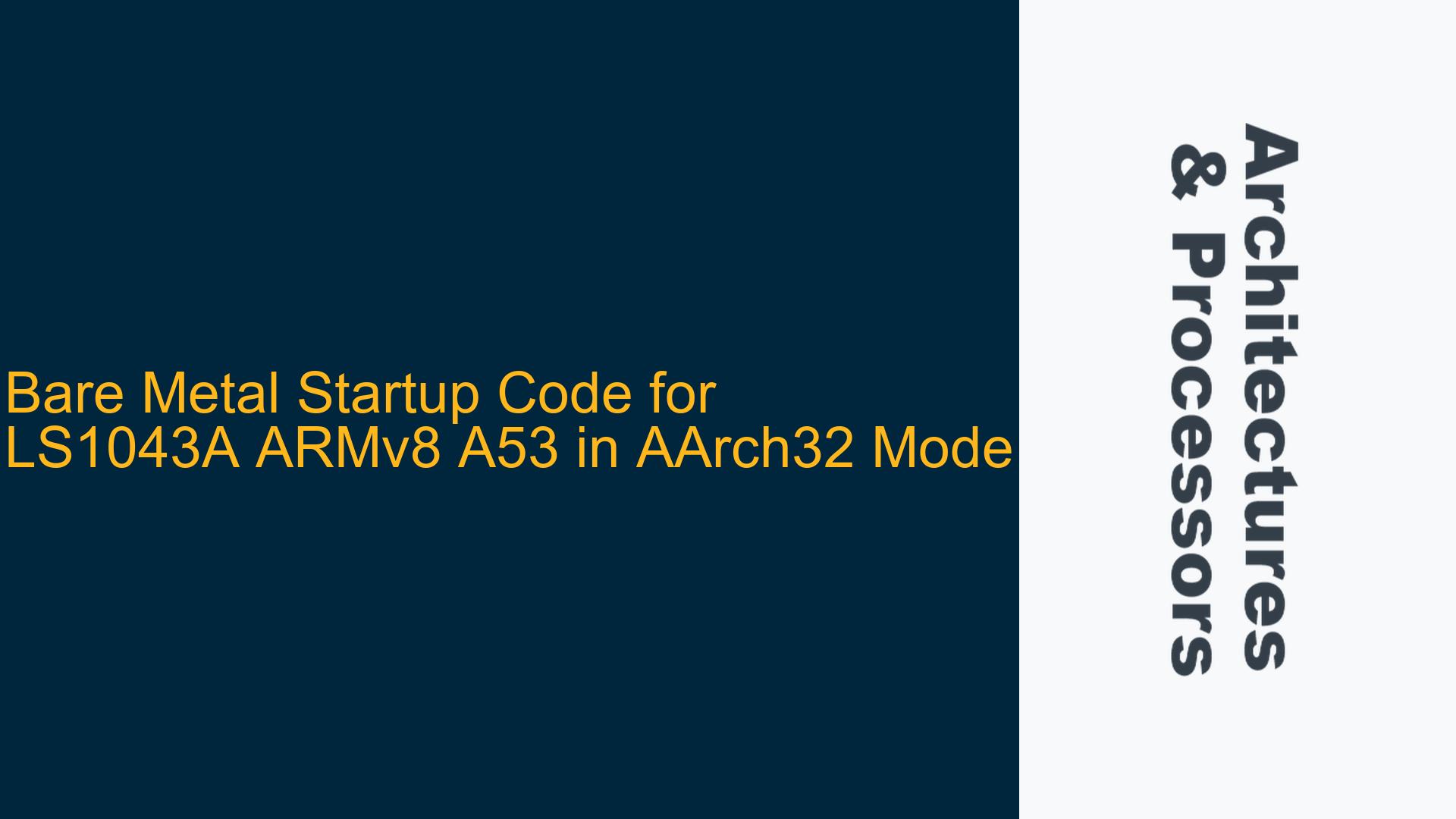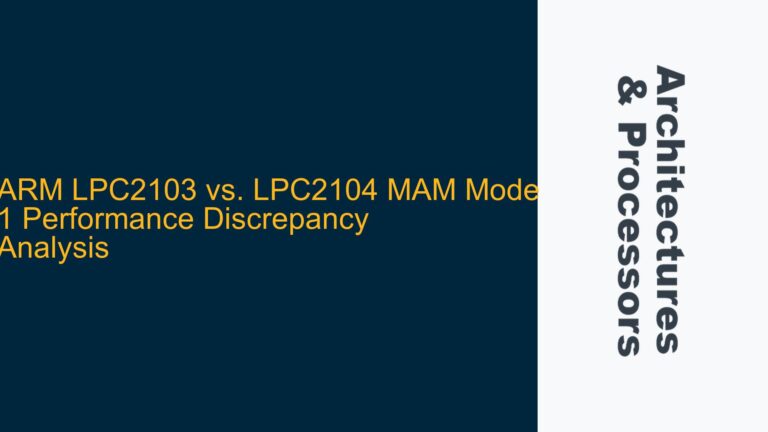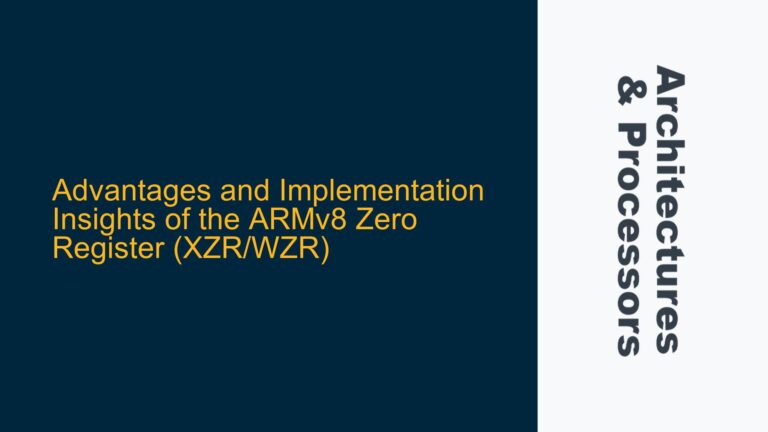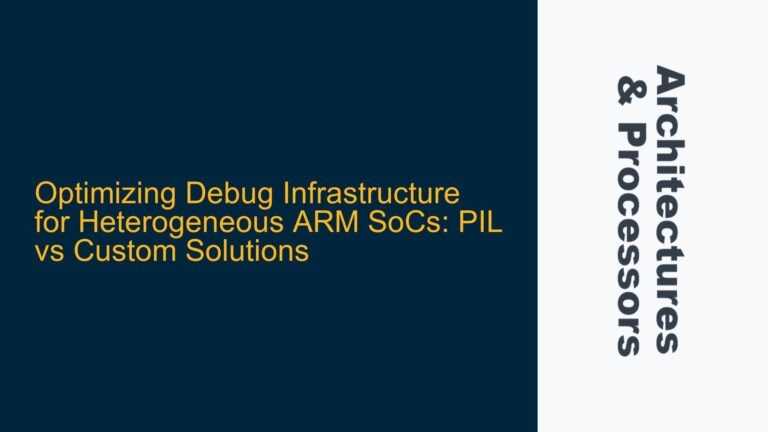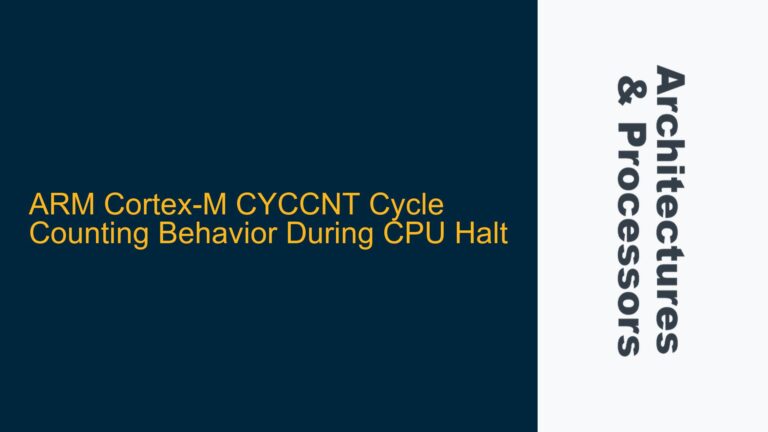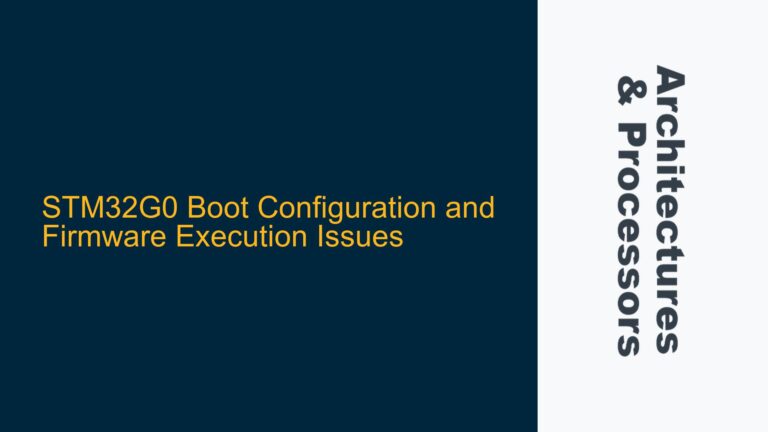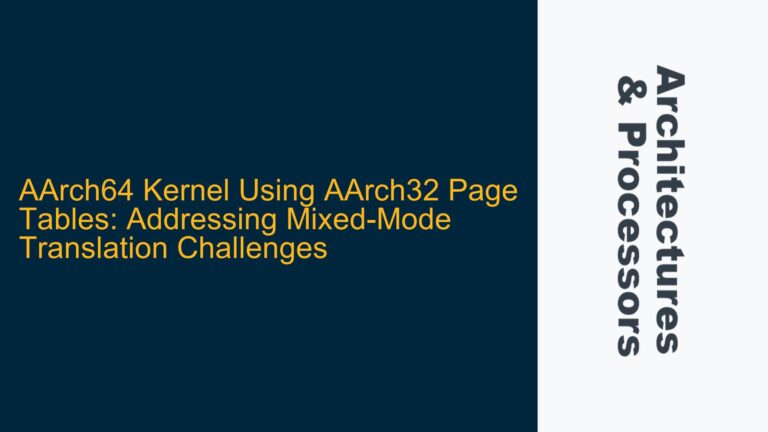ARMv8 A53 Core Initialization and SoC-Specific Configuration Challenges
When developing bare metal startup code for the LS1043A, which features an ARMv8 A53 core operating in AArch32 mode, several critical aspects must be addressed to ensure proper initialization and functionality. The ARMv8 architecture introduces a significant shift from previous ARM architectures, particularly in terms of execution states (AArch64 and AArch32), memory management, and cache coherency. The LS1043A, being a System on Chip (SoC), adds another layer of complexity due to its specific peripheral configurations, memory maps, and boot requirements.
The primary challenge lies in adapting existing bare metal code, originally written for a different SoC with the same ARMv8 A53 core, to the LS1043A. While the core architectural elements such as the vector table, exception handling, and cache management routines are consistent across ARMv8-A cores, the SoC-specific components like DDR memory initialization, MMU configuration, and peripheral setup require careful modification. The LS1043A’s memory map, including DDR start and end addresses, internal RAM (OCM), and peripheral regions, must be accurately defined to avoid runtime errors and ensure proper system operation.
Additionally, the transition from AArch64 to AArch32 mode introduces nuances in register usage, exception handling, and instruction set compatibility. The startup code must correctly initialize the core, configure the MMU, and set up the stack and heap regions before transitioning to the main application. Misconfigurations in these areas can lead to hard-to-debug issues such as data aborts, undefined instruction exceptions, or cache coherency problems.
Core vs. SoC Dependencies in ARMv8-A Bare Metal Development
The ARMv8-A architecture, while providing a unified foundation across implementations, leaves certain aspects open to SoC-specific customization. This duality is particularly evident in the context of bare metal development, where the startup code must account for both core-level and SoC-level dependencies.
At the core level, the ARMv8-A architecture defines the behavior of the vector table, exception handling, and cache management. The vector table, which contains the addresses of exception handlers, is standardized across all ARMv8-A cores. This means that the vector table structure and the exception handling routines from the Xilinx code can be reused with minimal modifications. Similarly, cache management routines, which involve flushing and invalidating caches, are largely consistent across ARMv8-A cores, as they rely on reading and writing to core-specific registers.
However, the SoC-level dependencies introduce significant variability. The LS1043A, for instance, requires specific initialization sequences for its DDR memory controller, which differ from those of the Xilinx processor. The DDR start and end addresses, as well as the timing parameters, must be configured according to the LS1043A’s memory map and hardware design. Failure to do so can result in memory access violations or unstable system behavior.
The MMU setup is another area where SoC-specific considerations come into play. While the ARMv8-A architecture provides a standardized MMU framework, the actual page table configuration and memory region definitions depend on the SoC’s memory map. The LS1043A’s internal RAM (OCM) and peripheral regions must be mapped correctly to ensure proper access and protection. Additionally, the .bss section, which contains uninitialized data, must be placed in a memory region that is accessible and properly aligned according to the LS1043A’s memory map.
Implementing Bare Metal Startup Code for LS1043A in AArch32 Mode
To implement bare metal startup code for the LS1043A in AArch32 mode, the following steps must be followed, ensuring both core-level and SoC-level requirements are met:
Core Initialization and Exception Handling
The first step in the startup code is to initialize the ARMv8 A53 core and set up the exception handling mechanism. This involves defining the vector table, which must be placed at a specific address in memory. The vector table contains the addresses of the exception handlers for various exceptions such as reset, undefined instruction, and data abort. The vector table structure is consistent across ARMv8-A cores, so the existing Xilinx code can be reused with minimal modifications.
Once the vector table is defined, the core must be configured to operate in AArch32 mode. This involves setting the appropriate bits in the Current Program Status Register (CPSR) and ensuring that the core is in the correct execution state. The stack pointers for different processor modes (e.g., Supervisor, IRQ, FIQ) must also be initialized to ensure proper exception handling.
Memory Management and DDR Initialization
The next step is to configure the MMU and initialize the DDR memory. The MMU setup involves defining the page tables and mapping the memory regions according to the LS1043A’s memory map. This includes mapping the DDR memory, internal RAM (OCM), and peripheral regions. The page table configuration must ensure that the memory regions are accessible and protected according to the application’s requirements.
DDR initialization is a critical step that involves configuring the DDR memory controller with the correct timing parameters and setting the DDR start and end addresses. The LS1043A’s DDR memory controller must be programmed according to the hardware design, and the memory regions must be tested to ensure proper functionality. This step is SoC-specific and requires careful attention to the LS1043A’s documentation.
Cache Management and Data Synchronization
Cache management is another important aspect of the startup code. The ARMv8-A architecture provides mechanisms for flushing and invalidating caches, which are essential for maintaining cache coherency. The cache management routines must be implemented to ensure that data is correctly synchronized between the core and memory. This is particularly important during DMA transfers and when transitioning between different execution states.
Data synchronization barriers (DSB) and instruction synchronization barriers (ISB) must be used to ensure that memory accesses and instructions are executed in the correct order. These barriers are essential for maintaining the consistency of the system state and avoiding hard-to-debug issues.
.bss Section Initialization and ELF File Structure
The .bss section, which contains uninitialized data, must be initialized to zero before the main application starts. This involves setting up the memory region for the .bss section and clearing it using a loop or a similar mechanism. The .bss section is part of the ELF file structure, and its placement and size are defined in the linker script.
The linker script must be configured according to the LS1043A’s memory map, ensuring that the .bss section is placed in a memory region that is accessible and properly aligned. The linker script also defines the placement of other sections such as .text, .data, and .rodata, which must be configured according to the application’s requirements.
Testing and Debugging
Once the startup code is implemented, it must be thoroughly tested to ensure proper functionality. This involves running the code on the LS1043A and verifying that the core is correctly initialized, the memory regions are properly mapped, and the exception handling mechanism works as expected. Debugging tools such as JTAG and serial output can be used to trace the execution of the code and identify any issues.
In conclusion, developing bare metal startup code for the LS1043A in AArch32 mode requires a deep understanding of both the ARMv8-A architecture and the LS1043A’s SoC-specific requirements. By following the steps outlined above, developers can ensure that the startup code is correctly implemented and that the system is properly initialized for the main application.
